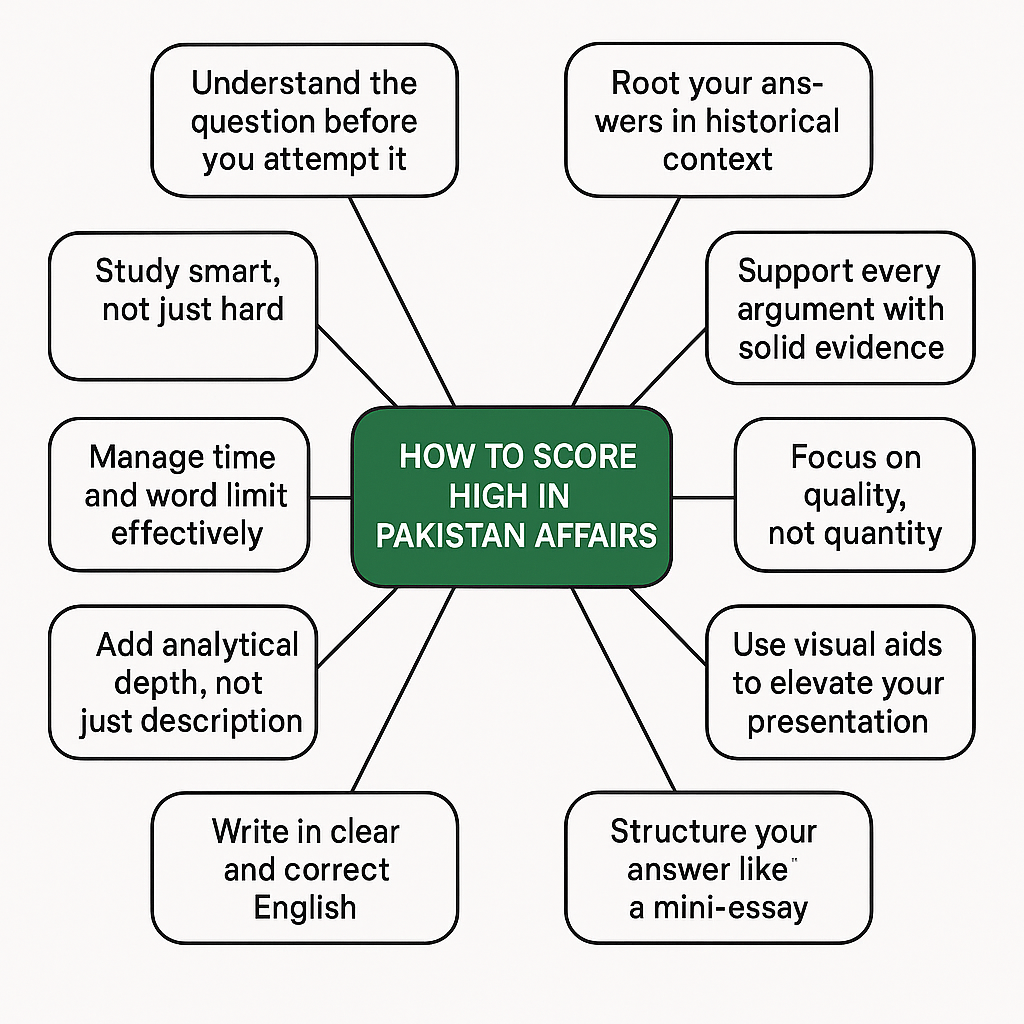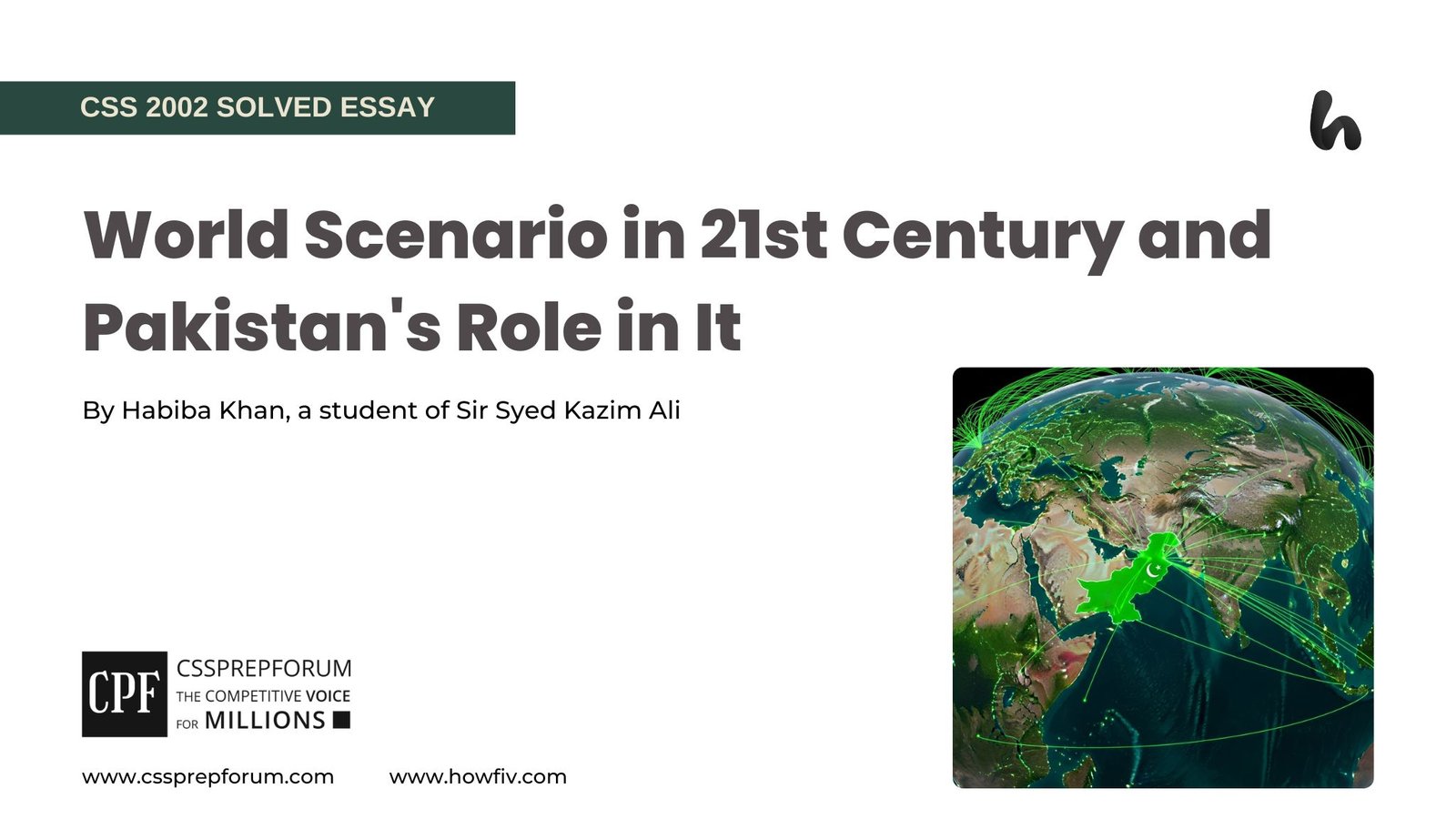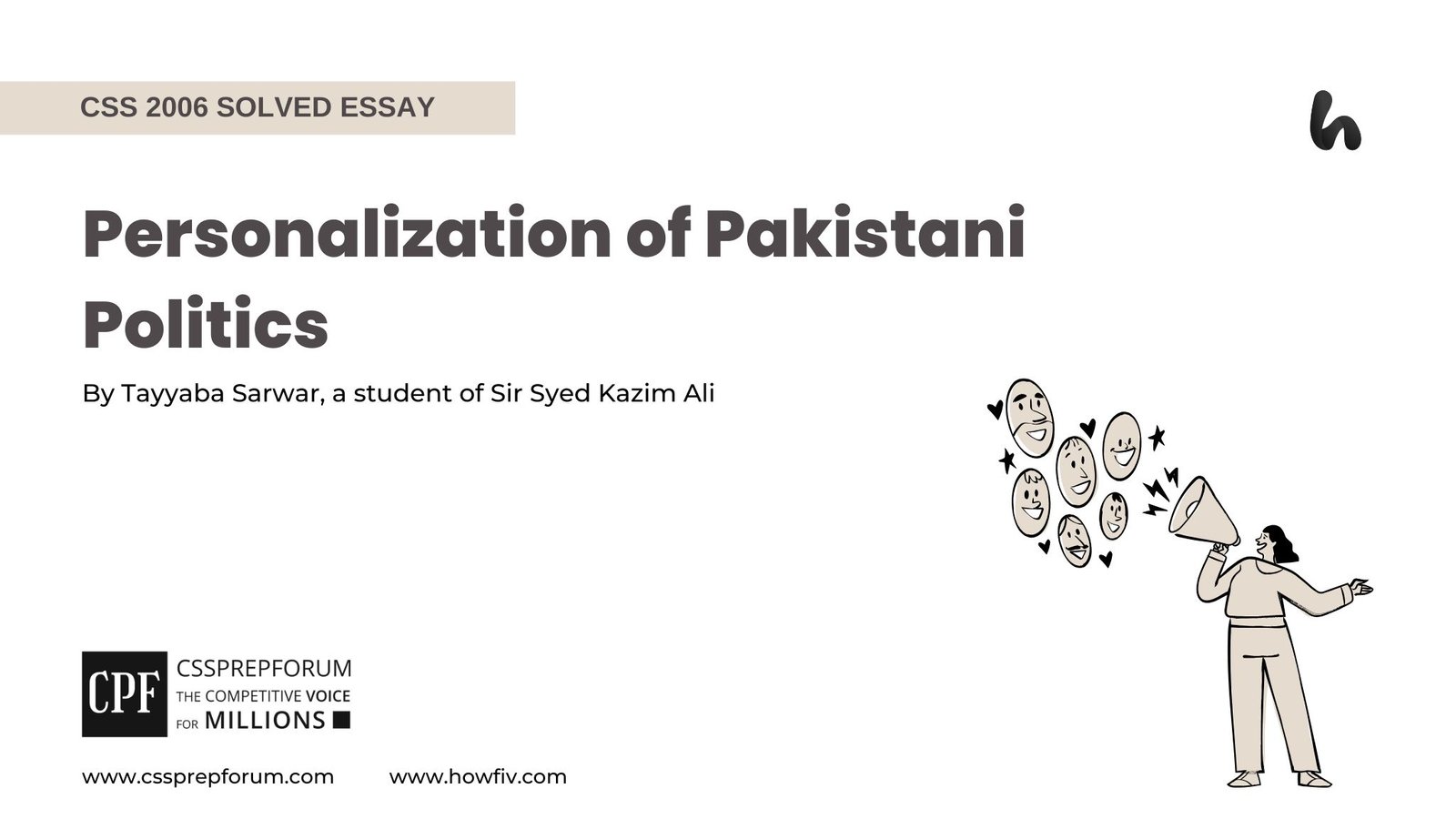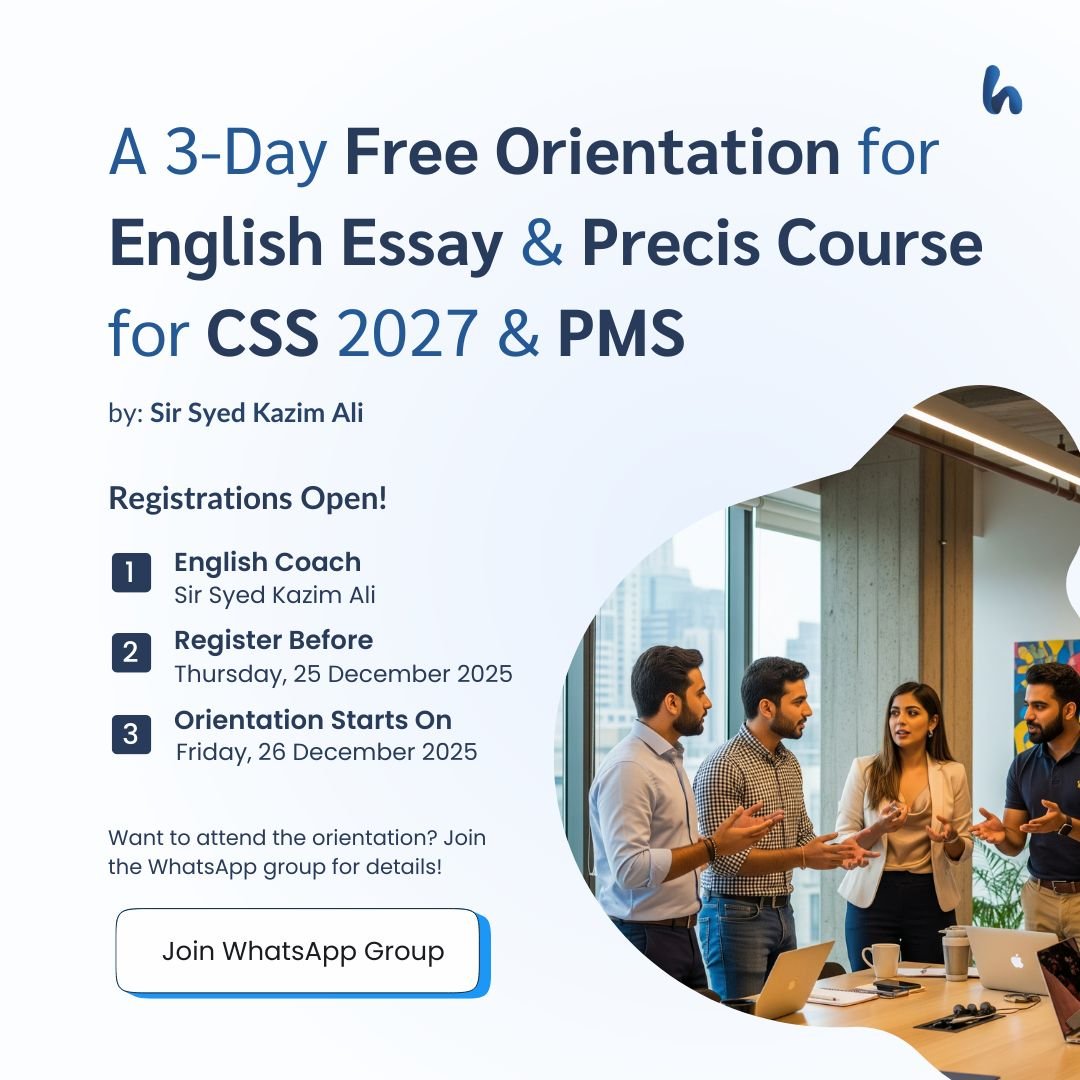Struggling to score well in the Pakistan Affairs paper despite reading everything? You’re not alone. The key to success lies not in studying more, but in studying smart. This comprehensive blog breaks down the essential strategies and techniques that will elevate your performance and help you secure top marks.

“The day my CSS result was announced, I was confident that I had done justice to atleast Pakistan Affairs paper. I remembered attempting all questions, writing structured answers, even sprinkling in relevant headings and examples. But when I saw the marks, I was stunned. I had failed.”
These are not the words of only one aspirant; such thoughts echo in the voices of hundreds of CSS aspirants every year who take CSS and PMS exams, or any competitive exam. When all believed they had studied hard, read all the recommended books, memorized every event, but when it came to scoring, something was missing. Why did the effort not translate into marks? There is a secret to it, and this blog is going to unpack the invisible gap between effort and result. The following are the most crucial yet often overlooked techniques that can turn your attempt from average to outstanding. If you’ve been struggling despite working hard, this guide is for you.

Let’s begin with the most critical step, understanding the question itself. One of the most frequent mistakes candidates make is misinterpreting what is being asked. Instead of rushing into writing, pause and dissect the question. What is the main theme? What are the directive words—analyze, discuss, evaluate? Grasping these elements is essential because it sets the tone and direction of your entire answer. For example, if a question asks you to “evaluate the impact of foreign policy on national integration,” your focus should be on the impact, not just describing policies chronologically.
Moving forward, your answers must always be rooted in historical context. Each contemporary issue has a historical origin, and showcasing that connection demonstrates your depth of understanding. For instance, when discussing federalism in Pakistan, link it back to the pre-partition and post-independence provincial dynamics. A historical overview builds your narrative and proves that you see the bigger picture.
Once you’ve built a strong base, support every argument with solid evidence. Bare statements won’t impress the examiner unless they’re backed by facts, statistics, or references. If you’re writing about civil-military relations, don’t just make claims; mention the 1958 Martial Law, the 1977 coup, or the indirect institutional interference. You can add theories, facts, quotes, or anything as evidence. Specific evidence like this gives credibility and weight to your answer.
That said, resist the urge to show off everything you know. Examiners value quality over quantity. Stay focused on the question and eliminate redundant or off-topic information. Writing more than required not only wastes time but also dilutes the quality of your response, overloading your answer with irrelevant detail. For example, if a question is about the causes of the 1971 debacle, don’t waste time recounting the entire political history of East Pakistan unless it directly supports your points. Stay focused. Quality always trumps quantity.
To take your presentation to the next level and truly distinguish your answer from the rest, enrich it with well-integrated visual aids, such as timelines, organograms, tables, or annotated maps. These elements not only break the monotony of text but also offer visual clarity that can impress examiners. For example, if you’re asked about the geostrategic significance of Gwadar, don’t limit yourself to a paragraph filled with statistics and facts. Instead, insert a simple, well-labeled map showing Gwadar’s location in relation to major regional trade routes, the Strait of Hormuz, and CPEC corridors. This visual instantly communicates strategic relevance without overwhelming the reader. Similarly, when writing about the constitutional evolution of Pakistan, a chronological timeline highlighting major amendments can simplify a complex narrative. Or if you’re discussing institutional frameworks, a neatly structured organogram can effectively represent institutional hierarchies.
Equally important is how you structure your answer. Your response should unfold logically: begin with a concise introduction, transition into well-organised paragraphs, and conclude effectively. An introduction should briefly contextualize the topic and preview your stance. A conclusion, on the other hand, must wrap up your analysis and possibly hint at broader implications or solutions. These bookends make your answer feel complete and polished. Likewise, allocate space based on importance. In this respect, primary arguments deserve more elaboration, while secondary ones should be brief but relevant. Think of your answer like a well-composed essay, where every part flows into the next.
Analysis is where many candidates fall short. Avoid turning your answer into a Wikipedia article. Go beyond description. Explore causes, consequences, and comparisons. To illustrate, for the topic is Pakistan-US relations, don’t just list events. Analyze policy shifts, economic dependencies, or security concerns. Your insights can be the key to higher marks.
Of course, none of this matters if your language is confusing. Stick to clear, correct English. Avoid flowery expressions and grammatical errors. For example, instead of saying “Pakistan, in all its historical glory, has encountered multitudes of constitutional whirlwinds,” simply write, “Pakistan has faced several constitutional crises throughout its history.” Clarity always beats complexity. Likewise, a sentence like, “The issues was arises in 1956 when constitution is not implement properly,” is not only incorrect but also distracts from the content. It should be written as, “The issues arose in 1956 when the constitution was not implemented properly.”
Finally, write just enough. Overshooting the word limit can dilute your main points and waste time; writing too little may reflect poor time management or weak knowledge. Strike a balance. Plan your answer and allocate time wisely to each section.
Excelling in Pakistan Affairs requires a strategic approach rather than mere rote learning. By breaking down the question properly, embedding your answers in historical context, supporting claims with evidence, and structuring responses effectively, you can significantly improve your score. Add visual aids, stay within limits, and maintain analytical depth and linguistic clarity. These ten tips, when applied diligently, can be the game-changer in your CSS journey.













